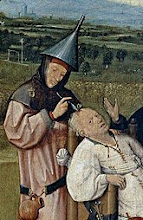http://www.yaledailynews.com/articles/view/19548
http://www.yaledailynews.com/articles/view/23084
Abortion demonstration marks Roe anniversary
Students who walked into WLH 119 on Tuesday night were greeted with models of the female pelvis complete with fallopian tubes, cervixes, vaginas — and papayas on which to perform mock abortions.
In commemoration of the 1973 Roe v. Wade Supreme Court decision, the 35th anniversary of which is this month, the Reproductive Rights Action League at Yale (RALY), in conjunction with Yale Med Students for Choice, demonstrated different abortion methods and techniques, answered questions students had about the procedures and encouraged students to be active in abortion-rights groups during last night’s presentation. The presentation was part of a week-long celebration of the 35th anniversary of the landmark decision.
“I’m here to talk about what happens after you get past the picket lines,” Merritt Evans MED ’09, a member of Yale Medical Students for Choice, told the assembled crowd of about 15 students.
The presenters began by showing the students different surgical tools used during different stages of a pregnancy and ticking off statistics about the safety and number of abortions performed in the United States. Eighty-five percent of counties in America do not have any abortion providers, Evans said.
Evans and Rasha Khoury MED ’08, another member of Medical Students for Choice, who said she plans to become a gynecologist and expects to perform abortions, went on to describe one of the most common abortion procedures, manual vacuum aspiration, which “creates suction to evacuate pregnancy,” Evans said. The technique is a good option because the device involved is reusable and relatively cheap, she said.
“It’s not as scary as it seems. It’s just blood and mucus,” Khoury said, referring to the fetus remains in the device. She added, “You’ll be able to see arms and stuff, but still just miniscule.”
Evans and Khoury also explained the finer points of abortion-clinic etiquette, including some potentially sensitive terminology. Khoury said physicians performing abortions generally refer to the aborted fetus remains as “POC,” an acronym for “product of conception,” and refer to fetus’ hearts as “FH.”
The most complicated part of the procedure can be the emotional fallout some patients experience, she said.
“Often times, women are crying and cursing and saying they’re going to hell,” Khoury said. “It may be a quick and easy medical procedure, but it definitely is a very involved social-medical procedure.”
The presenters also urged the crowd to become involved in the abortion-rights movement by joining Reproductive Health Externships, a campaign in which volunteers are taught how to conduct abortions.
“It’s fun because you meet people from all over the country who do them,” Khoury said. “It’s pretty inspiring.”
The ethical implications of abortion may be a topic of endless debate, but Elizabeth Kim ’11, who attended Tuesday night’s meeting, said she remains unsure of where she stands on the issue.
“I wanted to learn about the scientific and medical process before I can make any conclusions about the ethics,” she said. “It disturbed me how quick and clean the procedure is, because it is a big deal.”
The week’s events began with the showing of a documentary about abortion Monday and will end Saturday with a performance by the all-female comedy group the Sphincter Troupe.
---
So...this article has been removed. Was it a hoax? Will I soon receive a "cease & desist" order? Was it removed because it named names or, more scarily, did the writers not even UNDERSTAND how incendiary the article would be?
